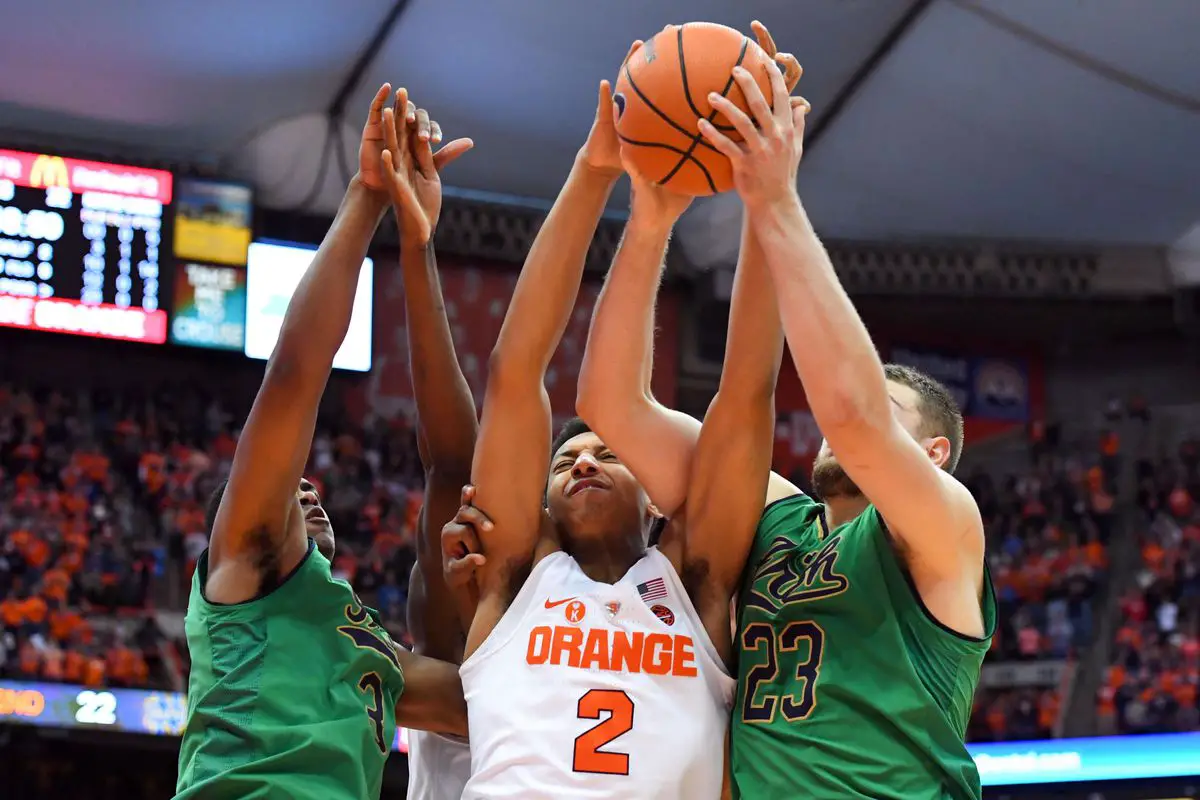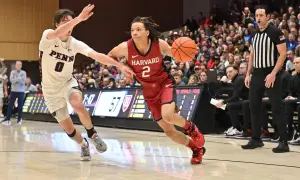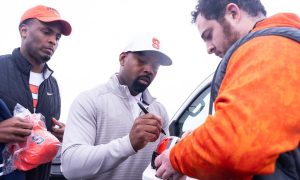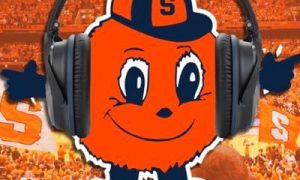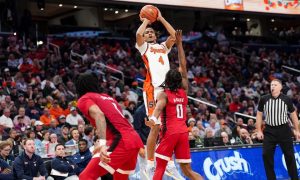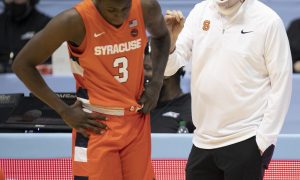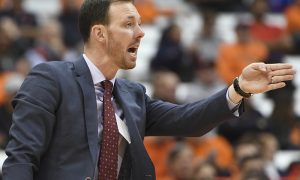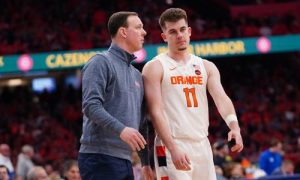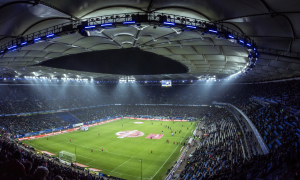Perhaps the most fascinating subplot of this Syracuse men’s basketball season — and there are a plethora to choose from (RIP Geno Thorpe) — has been the Orange’s relationship with the glass. SU began the year as one of the best rebounding teams in the nation, but has since seen that strength erode and rear its ugly head as a weakness multiple times.
Let’s take a trip down memory lane and try to understand how Syracuse went from dominant to dormant on the boards over the course of the 2017-18 schedule.
December 5: Jim Boeheim gushes about his team’s rebounding prowess
In another installment of a once-prestigious rivalry that now pits one perennial bubble team against a mediocre AAC program, Syracuse took care of business against UConn at Madison Square Garden in early December. The Orange grabbed 11 more boards than the Huskies did, marking the sixth time in SU’s first games in which it outrebounded its opponent by double-figures (the ‘Cuse outrebounded Maryland by six and Kansas by five).
After the win moved his team to 7-1 on the season, head coach Jim Boeheim dropped a bit of praise that seems downright blasphemous in hindsight.
“We haven’t rebounded at this level since Derrick Coleman, probably,” he said. “That was a long time ago. Most people probably don’t know who he is.”
That last part likely isn’t true, but has been a long time since Coleman suited up in college. He feasted on the Big East (sorry, the *BIG EAST*) from 1986 to 1990, averaging 10.7 rebounds per game during his legendary career, including 12.1 as a senior.
December 31: Syracuse opens ACC play with another dominant showing on the boards
The Orange outrebounded all 13 of its non-conference opponents, but it would have been easy for fans to write that off as a byproduct of weak competition. Anyone who still doubted the team’s glass-cleaning ability had to shut up after the ACC opener, though.
The ‘Cuse was a rebound vacuum — 39-26 (+13) — in a convincing 68-56 win over Virginia Tech, the same team that has since knocked off North Carolina, Virginia, and Clemson. That victory on New Year’s Eve still stands as SU’s most impressive home win of the season.
The Hokies aren’t a great rebounding group, but they still clean the defensive glass at a respectable clip (VT pulls down 70.9% of its opponents’ misses, slightly below than the national average of 71.2%). After that win, Syracuse ranked sixth in the country in total rebounding rate at 57.2%.
January 3: The Orange loses the rebounding battle for the first time
In the Orange’s next game, Wake Forest crushed Syracuse on the glass, to the tune of a 38-29 (+9) margin in favor of the Demon Deacons.
“They stopped me from getting to the glass and that’s something that I pride myself on,‚Äù SU freshman Oshae Brissett, who corralled seven rebounds (below his average of 8.8), said after the game. ‚ÄúI tried to get on there but there was if not one, two other guys in front of me, stopping me, stopping Paschal [Chukwu]. The whole five went back. They didn’t want us getting any boards.”
“We knew they were one of the best rebounding teams in the country, period,” Wake Forest behemoth Doral Moore said. “So we knew if we had any chance to win, we had to come in and rebound the best we could.”
January 6: The wheels fall off against Notre Dame
In a span of two games, Syracuse morphed from one of the nation’s premier rebounding teams to a group that opponents could exploit on the glass. Against a Notre Dame team that was missing Bonzie Colson, a menace on the boards, the Orange allowed the Irish to pile up an unconscionable 21 offensive rebounds (out of 40 available boards, so, yes, they snagged more than half of their own missed shots), including Rex Pflueger’s game-winning putback right before the buzzer. In total, the Irish hammered SU on the glass, 42-27 (+15).
That prompted Boeheim’s most head-scratching comment of the season.
“We’re not a good rebounding team. That was a myth. A complete myth,” Boeheim said.
Before you scroll up to read what he said after the UConn game, I’ll just paste it here:
“We haven’t rebounded at this level since Derrick Coleman, probably.”
When taken at face value, that is the ultimate contradiction. Less than one month after proclaiming this group as his best rebounding unit in nearly three decades, Boeheim refuted a “myth” that he helped promulgate.
But Boeheim hit the nail on the head with the back half of his quote after the Notre Dame debacle.
“Nobody’s really gone to the boards except the last two games. And when they did, we cannot rebound down there. They’re very physical guys. They bang you. We have trouble with that.”
The three guys who have anchored the 2-3 zone this season — Chukwu, Bourama Sidibe, and Marek Dolezaj — are all string beans. Most big men in the ACC can out-muscle them, and we’ve seen that physical disadvantage manifest itself several times throughout the conference slate.
In league play, Syracuse’s defensive rebounding rate (68.7%) ranks third from the bottom. The Orange used to be a force on the glass. Now, that strength has devolved into a quasi-weakness, and it hurts even more when you consider that the team’s anemic offense needs as many possessions as it can get.


